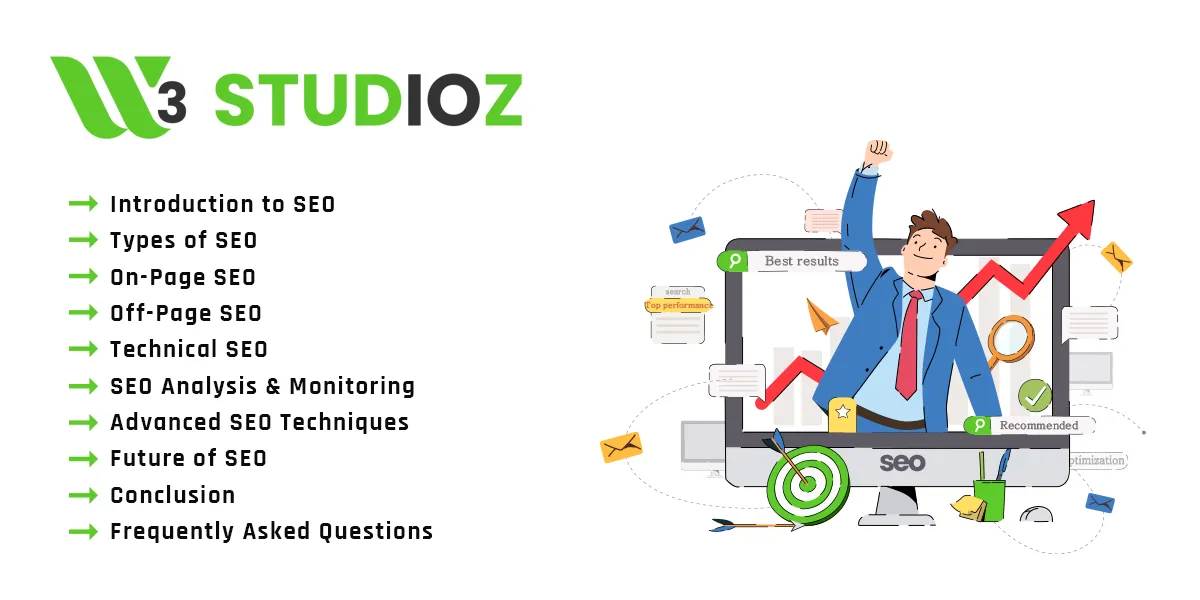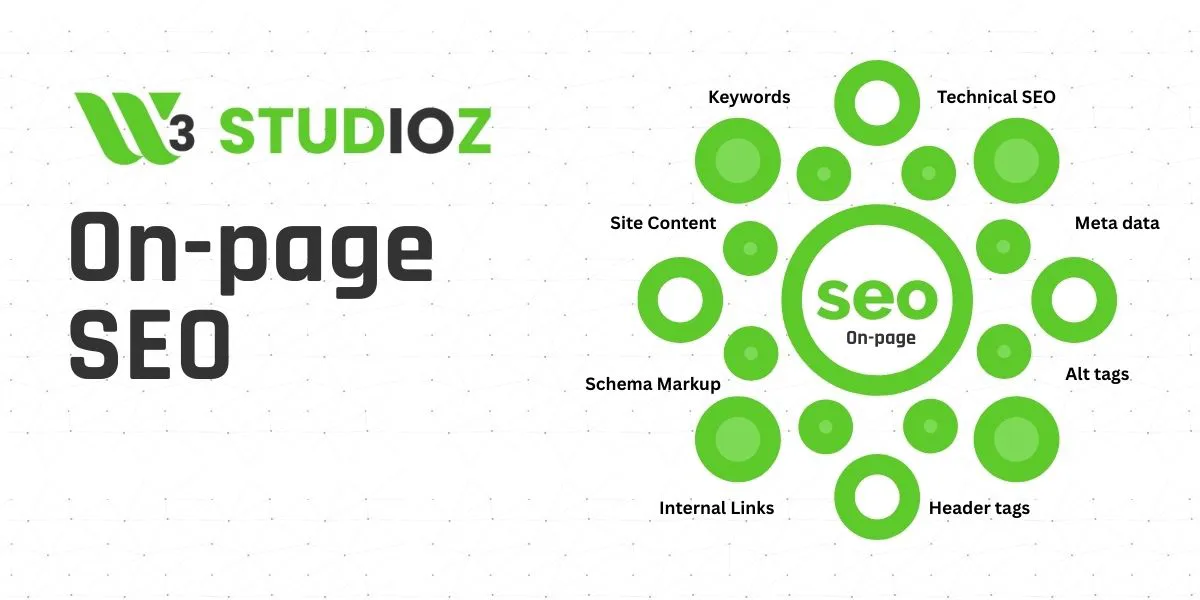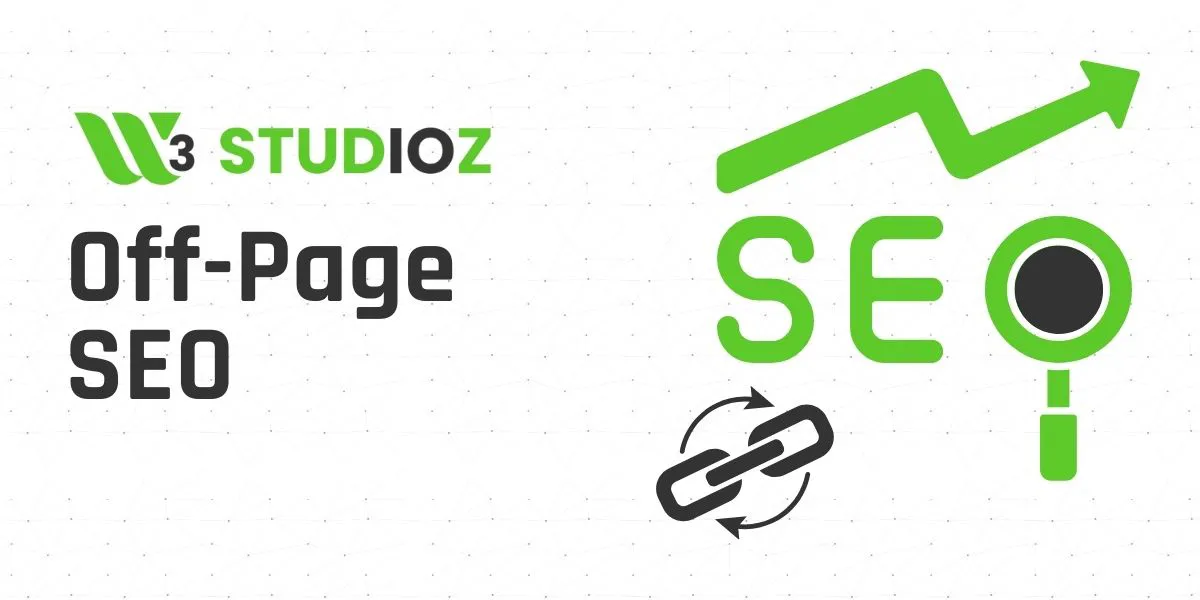Table of Contents
- Introduction to SEO
- Types of SEO
- On-Page SEO
- Off-Page SEO
- Technical SEO
- SEO Analysis & Monitoring
- Advanced SEO Techniques
- Future of SEO
- Conclusion
- Frequently Asked Questions
Introduction to SEO
Search Engine Optimization (SEO) is the art and science of enhancing your website to rank higher in search engines like Google, Bing, and Yahoo. A strong SEO strategy ensures that your business reaches potential customers organically, driving traffic, engagement, and revenue. SEO is no longer about simple keyword stuffing—it’s about delivering value, relevance, and a seamless user experience.
The core purpose of SEO is to make your website understandable and trustworthy for both users and search engines. This involves combining three pillars: On-Page SEO, Off-Page SEO, and Technical SEO. Additionally, modern SEO includes concepts like AEO (Answer Engine Optimization), SXO (Search Experience Optimization), GEO (Geographical SEO), and AIO (Artificial Intelligence Optimization), which help businesses adapt to evolving search behaviors and AI-driven search results.

Types of SEO
SEO can be divided into several types, each targeting a specific aspect of website optimization:
1. On-Page SEO
On-Page SEO focuses on all elements on your website that influence search engine rankings. This includes keyword research, high-quality content, proper use of headings, meta tags, internal linking, and images. On-page optimization ensures that your website is both user-friendly and search-engine-friendly.

2. Off-Page SEO
Off-Page SEO involves external strategies that improve your website’s authority and credibility. Backlinks from authoritative websites, brand mentions, influencer collaborations, social media signals, and digital PR are key components. Off-Page SEO helps search engines perceive your website as trustworthy and valuable.

3. Technical SEO
Technical SEO ensures that search engines can crawl, index, and understand your website efficiently. It covers site speed, mobile responsiveness, HTTPS security, robots.txt, XML sitemaps, canonical tags, and proper URL structure. Technical SEO lays the foundation for other SEO efforts and directly affects rankings and user experience.

4. Modern SEO Extensions
Modern SEO has evolved to include advanced techniques that cater to AI-driven search, local searches, and enhanced user experiences:
- AEO (Answer Engine Optimization): Optimizing for voice search and AI-powered assistants like Google Assistant and Siri.
- SXO (Search Experience Optimization): Combining SEO with user experience (UX) to enhance engagement and conversions.
- GEO (Geographical SEO): Local SEO strategies to rank in location-specific searches and Google Maps.
- AIO (Artificial Intelligence Optimization): Leveraging AI tools to analyze data, optimize content, and predict search trends.
On-Page SEO Techniques
On-Page SEO is crucial because it tells search engines what your content is about and how relevant it is to a user’s query. Key techniques include:
Keyword Research & Analysis
Finding the right keywords is the first step in SEO. Use tools like Google Keyword Planner, SEMrush, and Ahrefs to identify high-volume, low-competition keywords. Focus on user intent—whether informational, navigational, or transactional—and target long-tail keywords to capture qualified traffic.
High-Quality Content Creation
Content is king in SEO. Create in-depth, engaging, and original content that answers users’ questions. Include keywords naturally in headings, subheadings, and body text. Use multimedia like images, videos, and infographics to make your content more appealing.

Meta Tags Optimization
Optimize title tags and meta descriptions for search engines and users. Include primary keywords, keep titles under 60 characters, and meta descriptions under 160 characters. Compelling meta tags improve click-through rates from search results.
Internal Linking
Connect related pages on your website using internal links. This helps search engines crawl your site efficiently and distributes link equity, improving rankings for target pages.
Image Optimization
Compress images for faster loading, use descriptive filenames, and always include alt text for accessibility and SEO. Optimized images contribute to better rankings and improved user experience.
Schema Markup & Structured Data
Add schema markup to help search engines understand your content. Rich snippets like FAQs, ratings, and product information enhance search result visibility.
Off-Page SEO Techniques
Off-Page SEO focuses on building your website’s authority outside of your site. Main strategies include:
Backlinks & Link-Building Strategies
Earn high-quality backlinks from authoritative websites. Use guest posting, digital PR, influencer outreach, and HARO to acquire valuable links. Avoid spammy links which can harm rankings.

E-E-A-T (Expertise, Experience, Authoritativeness, Trustworthiness)
Establish your website and authors as credible sources. Showcase expertise through detailed content, author bios, citations, and positive reviews.
Social Media & Brand Mentions
Engage audiences on social media platforms. Brand mentions and shares signal relevance and trust to search engines.
Technical SEO Techniques
Technical SEO ensures your website is structured for search engine crawling and indexing. Important practices include:
- Site Speed Optimization: Compress images, leverage caching, and use CDN.
- Mobile-First Design: Ensure responsive design and smooth mobile experience.
- HTTPS Security: Secure your site with SSL certificates.
- Robots.txt & Sitemap.xml: Guide search engine bots for efficient crawling.
- URL Structure & Canonicalization: Avoid duplicate content and maintain clean URLs.
- Core Web Vitals: Focus on loading, interactivity, and visual stability metrics.

SEO Analysis & Monitoring
Monitoring SEO performance is critical for continuous improvement:
- Use Google Analytics and Search Console to track traffic, rankings, and user behavior.
- Analyze competitor content and identify keyword gaps using SEMrush or Ahrefs.
- Adjust strategies based on algorithm updates and performance metrics.
Advanced SEO Techniques
Advanced SEO involves leveraging emerging trends and technologies:
- AEO (Answer Engine Optimization): Optimize for voice search and featured snippets.
- SXO (Search Experience Optimization): Combine SEO with UX to increase engagement and conversions.
- GEO (Geographical SEO): Target local searches and optimize Google Business Profiles.
- AIO (Artificial Intelligence Optimization): Use AI tools for keyword clustering, predictive analysis, and automated content recommendations.

Future of SEO
SEO is continuously evolving. AI-driven algorithms, voice search, and user-centric search experiences are shaping the future. Websites that focus on relevance, authority, and excellent user experience will dominate search results. Investing in holistic SEO strategies ensures long-term growth and sustainability.
Conclusion
SEO is no longer optional—it’s essential for any business that wants to grow online. Combining On-Page SEO, Off-Page SEO, Technical SEO, and modern strategies like AEO, SXO, GEO, and AIO creates a powerful foundation for ranking success. Continuous optimization, high-quality content, and authoritative link building are the keys to long-term SEO success.
Frequently Asked Questions
On-Page SEO refers to optimizing content and HTML elements on your website, while Off-Page SEO focuses on external factors like backlinks, social signals, and brand authority.
Technical SEO ensures search engines can crawl and index your website efficiently. Proper technical SEO improves speed, mobile experience, security, and user experience, all of which impact rankings.
– AEO: Optimize for voice search and AI answer engines.
– SXO: Combine SEO with UX for better engagement and conversions.
– GEO: Focus on local SEO and location-specific searches.
– AIO: Use AI-driven tools for predictive and automated SEO optimization.
Use tools like Google Analytics, Google Search Console, SEMrush, and Ahrefs to track traffic, keyword rankings, backlinks, and content performance. Adjust strategies based on analytics data and competitor insights.
